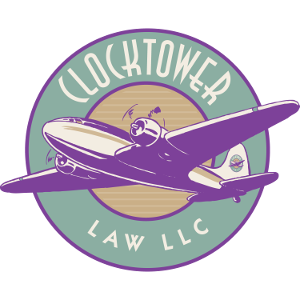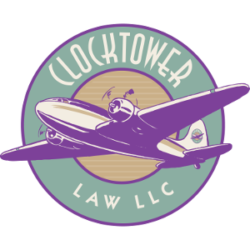Curated content on trademark strategy.
- * Trademark Planning
- * Trademark Due Diligence, Litigation, & Valuation
- * Trademark Search & Prosecution
- * Trademark Strategy For Visual Thinkers
- * Trademark Types
- * Trademarks And The Internet – Branding, Domain Names, & Social Networks
* Trademark Planning
Anchor Content:
Hope is not a strategy. Good trademarks habits start with planning. Start here.
Anchor Content:
* The Who, What, Where, When, Why, And How Of Trademarks (2016-09-30)
Trademark law in plain English. Why file trademarks? It is much less expensive to prevent trademark issues than to cure problems after they arise. Where should companies register trademarks? In general, companies should register trademarks in the countries where they are doing significant business. Who can register trademarks? In the US, a trademark applicant must be using its trademark in interstate commerce (i.e. in multiple states or countries) in order to qualify for federal registration. What can be registered as a trademark? The vast majority of trademarks fall into two basic categories: words and logos. How and when should companies register trademarks? Ideally, a company would conduct a trademark clearance search after choosing – but before using – its trademark.
* Trademark Planning – Junk Mail (2022-11-17)
USPTO trademark files are public. As such, after your trademark is filed, you may receive offers from various vendors for trademark-related services. Some of these vendors make their mail look like official government mail, so be alert for possible scams.
* Trademark Planning – Usage Guidelines (2021-08-17)
In order to help defend your trademarks, you should adopt good trademark usage guidelines. Apple’s guidelines remain among the best (https://www.apple.com/legal/intellectual-property/guidelinesfor3rdparties.html). We also have a version that you are free to use (clocktower-trademark-usage-guidelines-memo).
* Stealth Mode (2019-12-17)
When your startup is in stealth mode, you should draft the trademark goods/services description broadly so that you don’t inadvertently give away your product plans when your trademark application is published.
* Best Practices (2019-10-17)
You should use what you register and register what you use; you should register your “big four” trademarks (name, logo, tagline, products/services); and you should file in countries where you have significant business, partners, investors, or potential acquirers.
* Don’t Redesign Your Website – Unless You Want To Nuke Your Trademark Portfolio (2018-02-17)
Trademark applications and registrations frequently rely on a specimen (proof of use) from your website. If you redesign your website without considering trademarks, then you may not be able to register pending trademark applications, and you might not be able to renew existing registered trademarks.
* When To File Trademarks In Canada And Europe (2017-06-17)
For most companies with international business, North America (United States + Canada) represents a market worth X, and North America plus Europe represents 2X. So if you have customers, investors, offices, or suitors in Europe, then you should file trademarks in Europe for your top trademarks (i.e. your company name, logo, main product name, and tagline).
* 20% Of Registered Trademarks Are At Risk Due To Improper Use (2016-03-17)
Sometimes the legal left hand doesn’t know what the marketing right hand is doing. Website redesign, acquisitions, and changes in branding can all impact – positively or negatively – a company’s trademark portfolio.
* How To Find The Ideal Canadian Trademark Law Firm (2008-04-24)
Problem, meet process. When we were looking for a law firm in Europe to handle European patent and trademark matters for us, we reviewed hundreds of law firms before settling on one that shares our values. We used the same approach to find a Canadian trademark firm.
* Trademark Search & Prosecution
Anchor Content:
* Timeline For Filing A Trademark (2012-12-12)
It takes about a week to file a trademark application. In most cases, it takes about a year from filing a trademark application until you receive the certificate of registration.
* Trademark Search For Logos (2020-02-17)
Searching logos is more time-consuming than searching words, because matters of confusion are typically based on first impression.
* Trademark Renewals (2012-12-12)
Trademark registrations need to be renewed 5-6 years after registration, 10 years after registration, and every 10 years thereafter.
* How To Register A Trademark: Part 3: Trademark Filing (2009-04-07)
File your trademark application with TEAS. To file a US trademark application, go to the USPTO’s TEAS (Trademark Electronic Application System) page.
* How To Register A Trademark: Part 2: Trademark Search (2009-03-11)
Search trademarks to rule out likelihood of confusion. To search a trademark, go to the USPTO’s TESS (Trademark Electronic Search System) page.
* How To Register A Trademark: Part 1: Choosing A Good Name (2009-02-11)
A trademark is to your business as a foundation is to your house. There is one simple rule for choosing a good trademark: the weirder the better. The following categories of marks are listed from strongest to weakest. “Fanciful” marks are the strongest trademarks. “Arbitrary” marks are very strong trademarks. “Suggestive” marks are strong trademarks. “Descriptive” marks are weak trademarks. Examples include “Computer Equipment Store” and “Word Processor.” “Generic” marks are the weakest trademarks.
* Trademark Strategy For Visual Thinkers
* Drawing That Explains Trademark Likelihood Of Confusion (2019-05-17)
In short, confusion is likely when the goods/services are close enough, the trademarks are close enough, and the markets are close enough.
* Trademark Types
Anchor Content:
* Trademark Planning – Intent-To-Use Vs. Use-Based (2020-07-17)
Trademark applications can be based on actual or intended use. Filing an Intent-To-Use (ITU) application is the quickest way to protect your rights to a trademark. You can file an ITU trademark application without a specimen, but ITU applications generally end up costing more, because there are two filings: the initial filing followed by a second filing showing use.
* What Can Be Trademarked? (2018-01-07)
A trademark is anything that you use to identify your products and services with your company, including your company name, product names, service names, logos, taglines, sounds, colors, domain names, and some things that the USPTO hasn’t yet encountered.
* Foreign Trademarks (2012-12-12)
There is really no such thing as an “international trademark.” But based on certain treaties, when a company files a trademark application in one country, it can file a trademark application (usually within six months) in another country.
* Madrid Protocol Trademarks (2012-12-12)
International Trademarks. Under the Madrid Protocol (an international system for the registration of trademarks), a U.S. trademark application or registration can be the basis for an international trademark application, thereby allowing for centralized filing and administration of an international trademark portfolio.
* Trademarks That Suck (2009-02-12)
Lessons learned from suck-related registered trademarks. Sometimes the government screws up. Like when funny license plates get issued. The Internet is full of funny.
* Madrid Protocol: Affordable International Trademarks For Startups (2008-11-14)
The Madrid Protocol is a great option for startups who want foreign trademark protection but don’t want to file trademarks in separate countries. If you want to have trademarks in the United States and in Europe, then (1) file your trademark application in the US and (2) within 6 months of your US filing file a Madrid Protocol application for International Registration (designating the European Community).
* Logo Trademarks (2008-02-29)
Trademark A Logo. With logo trademarks, you are not necessarily claiming exclusive rights to the literal words in the logo but are claiming rights to the look and feel of the logo as a whole.
* Trademarks For Company Names And Nicknames (2007-10-04)
Trademarking company names and nicknames. Just drop the “Inc.” Many people incorrectly believe that company names cannot be trademarks. The legal name of a company cannot be a trademark (such as “Apple Computer, Inc.”) but the legal name almost always contains a trademark (such as “Apple”).
* Trademarks For Logos (2007-10-04)
Trademarking logos. If you have a distinctive logo that contains words, then you should eventually file both word and logo marks because they protect different things: the word mark the word itself, the logo the look-and-feel of the logo.
* Trademarks For Product And Service Names (2007-10-04)
Trademarking product and service names. A company’s products can be protected by trademarks, its services by servicemarks, but it is common to refer to both as trademarks. In general, the less a trademark describes your product or service, the more likely it can be registered.
* Trademarks For Slogans And Taglines (2007-10-04)
Trademarking slogans and taglines. A trademark is just that – a mark of a trade. Something that identifies the source of the products or services being offered. If a slogan or tagline is being used to identify the source of a company’s goods/services, then it can be registered with the the United States Patent and Trademark Office (USPTO).
* Trademarking Numbers (2004-02-17)
You can register numbers as trademarks, and some numbers are still available. Most of the numbers 1-99 are registered trademarks. If you are using a number to identify your goods or services, than you, too, may be able to register the number as a trademark.
* How (And Why) To Trademark Your Logo (2003-07-17)
If you have a word mark that may be difficult to register because it is descriptive, consider creating a logo that contains the words and register the logo. Both word marks and logos have deterrent effects (i.e. discouraging other from registering similar marks), since basic searches of the USPTO’s trademark database return both word marks and literal elements from logo marks.
* Trademark Due Diligence, Litigation, & Valuation
* What Should I Do If I Get A Trademark Cease And Desist Letter? (2016-07-17)
You should probably cease and desist. Chances are you didn’t search your trademark before using it. Or, in order to “save” money, you didn’t register your trademark. I know that everybody loves their names and logos, but they are both really a dime/dozen, whereas trademark infringement is forever. In most cases, it’s way easier (and cheaper) to cease and switch than to stand and fight.
* How To Avoid Infringing Red Sox Trademarks (2009-01-13)
Or anybody else’s, for that matter. If you want to avoid infringing anybody’s trademark, (1) avoid selling stuff like their stuff (2) using a name that looks or sounds like their trademark.
* Trademarks And The Internet – Branding, Domain Names, & Social Networks
Anchor Content:
* Twitter’s Trademark Policy Sucks (2016-04-27)
The odd case of @YarnAttic vs. @TheYarnAttic. The @TheYarnAttic Twitter account was wrongly suspended for 148 days. This article highlight flaws in both the USPTO’s trademark application/registration process and Twitter’s trademark/username dispute policy.
* For Better Branding, Use Your Twitter Username In Other Social Networks (2009-06-04)
By creating a consistent brand, you can have both better control of the brand and good search results for the brand, since social networking sites tend to be ranked high in search engines.
* How To Twittersquat The Top 100 Brands (2009-01-08)
A call for the creation of the Uniform Username Dispute Resolution Policy. Of the top 100 global brands, 93% have had their Twitter usernames taken by somebody else (i.e. Twittersquatted).
* Domain Name Law 101 (2008-01-28)
White hat domainers are not black hat cybersquatters. Those who stick to generic domain names are the good guys, the white hats of the domainer industry. Those who do not, those who intentionally register another’s company’s brands as domain names (including typos thereof) are the bad guys, the black hats of the domainer industry. Domainers are not cybersquatters.
* Yahoo! Registers First Favicon Trademark (2008-01-15)
You know that little icon that appears next to the URL in your browser? The same little icon that appears in your bookmarks window, on browser tabs, and in web feeds? That little icon, the favicon, can now be registered as a trademark with the USPTO.
* Chinese Domain Name Scam: Shanghai IDC, Gardiner Limited (2007-08-22)
Don’t fall for China domain name fraud. Helpful hint: Google these things and/or check Snopes.com to see if they are legit.
* The Brand Wars Are Coming, The Brand Wars Are Coming! (2007-07-01)
How to defend your brands on the Internet. In 1997, if you had a domain name and a registered trademark for your brand, you were in good shape. In 2007, it takes more to protect your brand on the Internet, because the definition of “brand” has expanded to include things that aren’t necessarily trademarkable (such as the names of your key personnel) and because your brand is at risk from being used (and abused) by cybersquatters and others in ways that weren’t foreseeable a decade ago.
* Book Review: The 22 Immutable Laws of Branding (2006-11-27)
By Al Ries and Laura Ries. If you choose a good brand by following the guidance given by Ries and Ries, then you will also end up with a good trademark for your brand.
* Just Say Moo – How To Name And Brand Your Product To Make It Stand Out From The Crowd (2003-12-08)
Good branding can separate your cow from the other cattle. The best strategy is to choose a distinctive company name that is a brand new word. This is, of course, the most fun and the most challenging. Made-up words can sound cool or they can sound like names that didn’t make the final cut for the Seven Dwarfs. There are naming companies that specialize in helping companies choose names.
* Trademarks vs. Domain Names (2003-03-17)
Trademark holders are winning 80% of their disputes with domain name registrants. The bad news (for small businesses) is that the cost of the administrative proceeding (not including legal fees) is at least $1500. As such, a “gray market” has arisen for cybersquatters who will gladly sell you a cybersquatted domain name for $1499. So small businesses who have had their trademarks registered as domain names by cybersquatters have three bad choices: 1) do nothing, 2) buy the domain name from the cybersquatter, or 3) pay at least $1500 to try to get the domain name back via UDRP arbitration.
* How To Name Your Company, Trademark Your Domain Name, And Domain Name Your Trademark (2002-11-20)
Think there are no cool domain names left? Think again. I found 201 cool domain names that are taken but six (count ’em, six) that are not. Some of them from a box of crayons. Plus strategies for protecting your trademarks, domain names, and company name.
* Internet Domain Names – Things Are Going To Get Worse Before They Get Better (1998-02-23)
One thing is clear to me about the current domain name situation: things are going to get worse before they get better. Some folks would like to add new top-level domain names such as “.mall,” “.web,” and “.inc”. But how would these new top-level domain names solve anything?
* Choosing The Perfect Domain Name (1997-03-01)
There is only one perfect domain name left. It’s LawLawLaw.com, and I just registered it.



